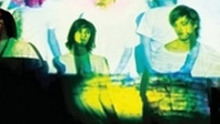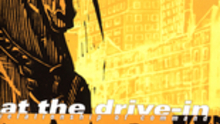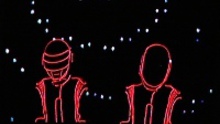Here are Two Gallants, let us call one of them Bloom and the other one Blight. Of course, these are interchangeable, and after five albumless years there is bound to be a good helping of both within their pages.
And it has not necessarily been an easy few years for the pair, but with the release of the duo's fourth album and a return to touring, what better time to take stock of their achievements thus far? The Bloom and the Blight is a concise album to say the least, and features none of the signature emotional meanderings of old. There’s no sign of the string section either; in fact, even the more poignant songs found littered around the heavier tracks hold a certain sense of closure, of distance. This album has been dubbed a work of personal catharsis following guitarist Adam Stephens’s recovery from a 2010 road accident, and the calm that snakes its way through the likes of ‘Decay’ and ‘Sunday Souvenirs’ may well be a sign of this. However, for fans who fell in love with the strained, at times hopeless Conor Oberst-esque cries of What the Toll Tells’s ‘Threnody’, this may not come as a pleasant surprise.
Indeed, the urgency seems to have dwindled in the old themes revisited in the lyrics. The natural world pervades the lines as strongly as ever, and yet the old subjects of love and loss, of religion and regret seem at times almost as token offerings held close long after the real feeling has faded.
But, while The Bloom and the Blight may have fallen short in some respects, in others its style blossoms. Two Gallants have matured their sound, and clearly so. This is their heaviest album to date, a darker and more howling affair that at times works brilliantly. Together with producer John Congleton, Stephens and drummer Tyson Vogel have created a record as close to their live performances as anything yet, showcasing the intricate interplay between the instruments and the musical force behind their passion. Highlights such as ‘Halcyon Days’ and ‘Ride Away’, unleash a previously unheard metal-edged searing of emotion, while ‘Cradle Pyre’s complexities tell a story that shouts to be heard.
These nods towards metal and even grunge take up a dialogue with the folk influences that, although darkened down, are still clearly present in songs such as ‘Broken Eyes’ and ‘Winter’s Youth’. Such opposing styles, a hallmark of Two Gallants’s musical dexterity, are reminiscent of the discourse between the polarised coupling of James Joyce’s gallants from whom they take their name; one proving a quiet, contemplative balance for the overbearing actions of the other, whilst both work mistrustfully towards their common goal. But does this double act manage somehow to balance out and create a rounded whole?
As Two Gallants head comfortably towards new and heavier ground, it could be that the interplay between this and their old quasi-emo style is wearing thin. Their new-found maturity is only to be celebrated, but it is now time for them to shake off the past and embrace the developed, spectacular sound that they have been nurturing in all those years away from the recording studio.
-
7Ruth Singleton's Score























